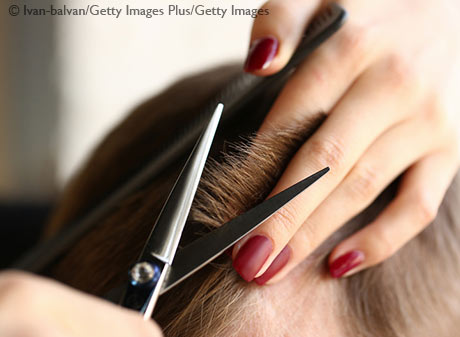Reopening the U.S. Economy an Industry at a Time

Although the social distancing measures implemented during the COVID-19 pandemic are likely to have mitigated its health cost, they are having a devastating impact on the economy. About 33.5 million workers in the U.S. have filed for unemployment benefits since mid-March. Governments at both the state and federal levels are thus facing increasing pressure to “reopen” the economy to prevent the economic cost from having a persistent impact for years to come. An important and highly debated question is whether it is time to reopen and, if so, how to do so in a way that prevents the pandemic from flaring back up.
In this blog post, we consider the potential of reopening the U.S. economy “an industry at a time.” If one were to do so, which industries should we reopen first? Which should we reopen last? To answer these questions, we constructed a novel index of physical contact exposure that ranks industries as a function of two dimensions: (1) the extent to which industries require high physical proximity across individuals to carry out their operations and (2) their reliance on intermediate inputs from industries that do require this type of physical proximity.
Following the methodology from our previous blog post, Leibovici, Fernando; Santacreu, Ana Maria; and Famiglietti, Matthew. “Social Distancing and Contact-Intensive Occupations.” St. Louis Fed On the Economy Blog, March 24, 2020. we begin by classifying industries as contact-intensive according to their required degree of physical proximity. Out of a total of 149 industriesAs defined by the North American Industry Classification System (NAICS). (excluding federal, state and local government industries), our approach identified 38 high contact-intensive industries, representing 55% of total employment and 46% of labor income. We then use input-output tables from the Bureau of Labor Statistics to examine the extent to which each industry relies on intermediate inputs from contact-intensive industries.
We constructed our index of physical contact exposure as follows. First, we ranked industries according to their own degree of physical proximity.See Michaels, Guy; Rauch, Ferdinand; and Redding, Stephen J. "Task Specialization in US Cities from 1880 to 2000." Journal of the European Economic Association, Vol. 17, No. 3, June 2019. They constructed a similar measure of contact intensity of an occupation that is based on the frequency with which verbs from the occupational descriptions appear in thesaurus categories involving, among others, intersocial activity. Second, we ranked industries according to their reliance on intermediate inputs from contact-intensive industries. Finally, we defined our index based on the maximum of the two ranks. Thus, an industry only needs to be contact-intensive along one of these two dimensions to be considered an industry with a high index of physical contact exposure.
Which Industries Should Reopen Last?
The table below reports the 20 industries with the highest physical contact exposure according to our index.See a full table of all industries. We find that dentists, hospitals and air transportation require a high degree of physical exposure and, thus, might not be the first industries to reopen. Other industries have a high degree of physical exposure indirectly via their intermediate inputs. For example, clay product manufacturing is not itself considered a contact-intensive industry, but it is highly vulnerable to the pandemic because more than 90% of its inputs are purchased from contact-intensive industries. Engineered wood manufacturing and cement manufacturing are similarly industries that might require significant physical exposure upon reopening due to the source of their inputs.
| NAICS Codes | Industry | Physical Proximity Index | Share of Inputs Purchased from Contact-Intensive Industries | High Contact-Index | ||
|---|---|---|---|---|---|---|
| 8121 | Personal care services | 88.98 | 1.3% | 149 | ||
| 3271 | Clay product and refractory manufacturing | 55.61 | 92.0% | 149 | ||
| 3212 | Veneer, plywood and engineered wood product manufacturing | 55.74 | 74.4% | 148 | ||
| 6212 | Offices of dentists | 83.67 | 0.0% | 148 | ||
| 6216 | Home health care services | 82.82 | 0.0% | 147 | ||
| 3273, 3274 | Cement, concrete, lime, gypsum and other nonmetallic mineral product manufacturing | 57.33 | 67.3% | 147 | ||
| 3117 | Seafood product preparation and packaging | 56.68 | 64.1% | 146 | ||
| 623 | Nursing and residential care facilities | 75.72 | 0.0% | 146 | ||
| 114 | Fishing, hunting and trapping | 48.98 | 61.8% | 145 | ||
| 6244 | Child day care services | 75.04 | 0.0% | 145 | ||
| 2123 | Nonmetallic mineral mining and quarrying | 58.50 | 60.9% | 144 | ||
| 622 | Hospitals | 74.90 | 0.0% | 144 | ||
| 112 | Animal production | 53.49 | 57.2% | 143 | ||
| 485 | Transit and ground passenger transportation | 74.86 | 9.3% | 143 | ||
| 487, 488 | Scenic and sightseeing transportation and support activities for transportation | 60.06 | 51.1% | 142 | ||
| 6213 | Offices of other health practitioners | 73.42 | 0.0% | 142 | ||
| 6214 | Outpatient care centers | 72.93 | 0.0% | 141 | ||
| 3323, 3324 | Architectural and structural metals manufacturing, boiler, tank, and shipping container manufacturing | 55.27 | 48.2% | 141 | ||
| 3391 | Medical equipment and supply manufacturing | 55.78 | 48.2% | 141 | ||
| 481 | Air Transportation | 72.15 | 6.1% | 140 | ||
| SOURCES: O*NETS, Bureau of Labor Statistics and authors’ calculations. | ||||||
An illustration of the usefulness of our analysis can be observed when sorting industries according to their index of physical of physical contact exposure. We found that the 26th most contact-intensive industry is “animal slaughtering and processing,” and the industries ranked as more contact-intensive are either related to health care or are considered nonessential industries except for “food and beverage stores.” This finding is consistent with news that the slaughterhouse industry has recently been affected by high rates of infection and difficulty in continuing operations.See this Wall Street Journal article. Given our index, this is likely not coincidental, and other nonmedical essential industries that are similarly contact-intensive, such as the postal service and truck transportation, should also be monitored closely for signs of outbreaks.
Although these industries should be last to re-open from a safety perspective, it may not be possible for many of them to do so. That is especially the case for industries providing essential services that cannot be performed remotely, such as dentists or home health care services.
Which Industries Should Reopen First?
The table below, instead, reports the 20 industries with the lowest physical contact exposure. Unsurprisingly, this group of industries is dominated by industries related to natural resources, manufactures and services that do not require close physical interaction. For instance, logging and scientific research present the lowest physical contact exposure, both in terms of the required physical proximity with others and in the amount of inputs used from contact-intensive industries.
| NAICS Codes | Industry | Physical Proximity Index | Share of Inputs Purchased from Contact-Intensive Industries | High Contact-Index |
|---|---|---|---|---|
| 1133 | Logging | 38.70 | 0.0% | 1 |
| 5417 | Scientific research and development services | 50.58 | 0.1% | 22 |
| 8132, 8133 | Grant-making and giving services and social advocacy organizations | 53.89 | 0.0% | 33 |
| 3364 | Aerospace product and parts manufacturing | 53.98 | 0.4% | 34 |
| 8131 | Religious organizations | 54.18 | 0.0% | 35 |
| 3122 | Tobacco manufacturing | 54.49 | 0.0% | 37 |
| 3335 | Metalworking machinery manufacturing | 54.66 | 1.1% | 39 |
| 6112, 613 | Junior colleges, colleges, universities and professional schools | 52.61 | 2.2% | 39 |
| 211 | Oil and gas extraction | 54.73 | 0.0% | 40 |
| 5111, 5112 | Newspaper, periodical, book, software and directory publishers | 52.53 | 3.1% | 42 |
| 8134, 8139 | Civic, social, professional and similar organizations | 52.92 | 4.1% | 47 |
| 3365 | Railroad rolling stock manufacturing | 55.18 | 0.9% | 49 |
| 3256 | Soap, cleaning compound and toilet preparation manufacturing | 55.17 | 4.6% | 50 |
| 3336 | Engine, turbine and power transmission equipment manufacturing | 55.26 | 1.4% | 50 |
| 111 | Crop production | 53.22 | 4.6% | 51 |
| 3321 | Forging and stamping | 55.35 | 3.9% | 53 |
| 3331 | Agriculture, construction and mining machinery manufacturing | 55.08 | 5.2% | 54 |
| 523, 525 | Securities, commodity contracts, funds, trusts, and other financial investment vehicles and related activities | 47.48 | 6.2% | 56 |
| 3344, 3346 | Semiconductor and other electronic component manufacturing, and manufacturing and reproduction of magnetic and optical media | 52.93 | 6.7% | 59 |
| 3314 | Nonferrous metal (except aluminum) production and processing | 55.75 | 4.2% | 59 |
| SOURCES: O*NETS, Bureau of Labor Statistics and authors’ calculations. |
||||
Two exceptions ranked as featuring low physical contact exposure are universities and religious organizations. Given their intrinsically social nature, this might reflect some of the limitations of our approach, which is based on computing industry-level indexes of contact intensity as an average across the occupations of the workers in the industry. Even if most workers carry out noncontact-intensive tasks, some of the work may involve essential tasks that require high physical proximity. In that situation, one might need to evaluate on a case-by-case basis whether the risk is worth taking or whether productive activities can be performed without such task. Moreover, industries with a low index of physical proximity in which tasks can be carried out remotely, such as those involving scientific research or education, may want to consider moving back to their normal in-person operations at a later stage; in those cases, the benefit of reopening might be overshadowed by the social and private costs of increased infections.
Conclusion
Figuring out how to reopen the U.S. economy to minimize both the health and economic costs of the COVID-19 pandemic is an ongoing problem that is being addressed from multiple alternative angles. In this blog post, we consider the possibility of opening sequentially one industry at a time. The index of physical contact exposure presented above can help to identify the industries that are both the most (least) contact-intensive and the most (least) reliant on inputs from contact-intensive industries. A dimension that should also be considered when determining what industries to reopen first is the possibility of these industries performing some of their tasks remotely.
Notes and References
1 Leibovici, Fernando; Santacreu, Ana Maria; and Famiglietti, Matthew. “Social Distancing and Contact-Intensive Occupations.” St. Louis Fed On the Economy Blog, March 24, 2020.
2 As defined by the North American Industry Classification System (NAICS).
3 See Michaels, Guy; Rauch, Ferdinand; and Redding, Stephen J. "Task Specialization in US Cities from 1880 to 2000." Journal of the European Economic Association, Vol. 17, No. 3, June 2019. They constructed a similar measure of contact intensity of an occupation that is based on the frequency with which verbs from the occupational descriptions appear in thesaurus categories involving, among others, intersocial activity.
4 See a full table of all industries.
5 See this Wall Street Journal article.
Additional Resources
Citation
Fernando Leibovici, Ana Maria Santacreu and Matthew Famiglietti, ldquoReopening the U.S. Economy an Industry at a Time,rdquo St. Louis Fed On the Economy, May 12, 2020.
This blog offers commentary, analysis and data from our economists and experts. Views expressed are not necessarily those of the St. Louis Fed or Federal Reserve System.
Email Us
All other blog-related questions




